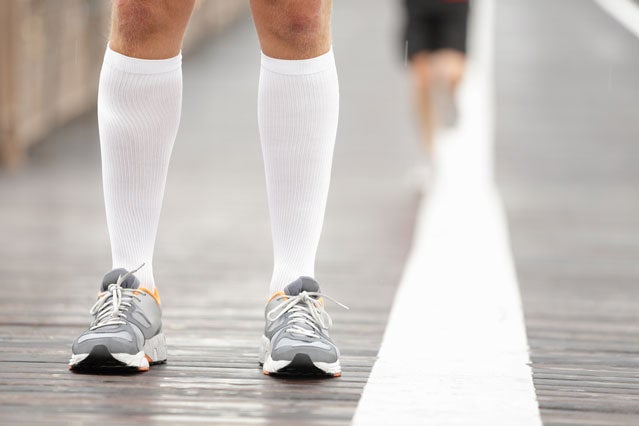You’re probably worried about , a condition in which a blood clot develops, most commonly in the legs. Part of that clot can break off and travel to the lungs, causing potentially life-threatening complications.
��
First, the good news: “Exercise alone is not a blood clot risk,” says Director of Exercise Physiology Research at Hartford Hospital, , who’s currently investigating the effects of sustained endurance exercise on exactly that: blood clot risk.
��
When we exercise, markers of blood clot formation increase. That’s natural; your body will make tiny clots to repair damaged blood vessels, Parker says. But the second a clot forms, the body releases enzymes that break it down. The result is normally balanced blood, and your risk of getting a larger, more threatening blood clot shouldn’t be any greater after training or racing.
��
That said, there are in favor of clotting, like the use of oral contraceptives and clotting disorders. Other clot-favoring factors specific to athletes include slow blood flow because of a low resting heart rate, and compression of veins by large muscles.
��
Researchers, however, have yet to determine if athletes are more likely than the general population to develop DVT, though Parker notes in a 2010 paper, “anecdotal evidence indicate that in at least a small fraction of otherwise healthy, avid exercisers, there may be an augmented risk of DVT following endurance exercise.” The risk in the general population, , is small with just 0.1 percent of people getting DVT annually.
��
Travel to and from an event can also up your clotting risk. The problem isn’t just with airplanes; the risk of getting deep vein thrombosis increases twofold with any form of sedentary travel lasting about four or more hours. That includes driving in a car or sitting on a train.
��
Following these rules can help lower your chance of getting DVT on a plane:
Dress Loose
Avoid wearing tight pants while traveling, Parker says. Pressure on your quads can push the blood down into your calves. However, compression socks, which squeeze the calves, have been decrease DVT risk by helping to push blood back up out of the legs.
Get Up and Move
Get up and move around during your flight to keep the blood flowing in your legs.
Go For the Aisle
Get an aisle seat. According to the Centers for Disease Control, people who sit in aisle seats have a lower risk of developing DVT than window seaters, likely because the guys in the aisle got up and stretched out their calves more often.
Currently, the Centers for Disease Control say there’s no evidence that staying hydrated will prevent DVT, though Parker says dehydration is one possible way travel may contribute to DVT in athletes. So stay hydrated after your event.
��
THE BOTTOM LINE: Anecdotal evidence has shown that some athletes may be at an elevated risk for developing deep vein thrombosis. If you’re traveling four or more hours from your event, whether by car, plane, or train, make sure you get up frequently to keep the blood moving in your legs.


